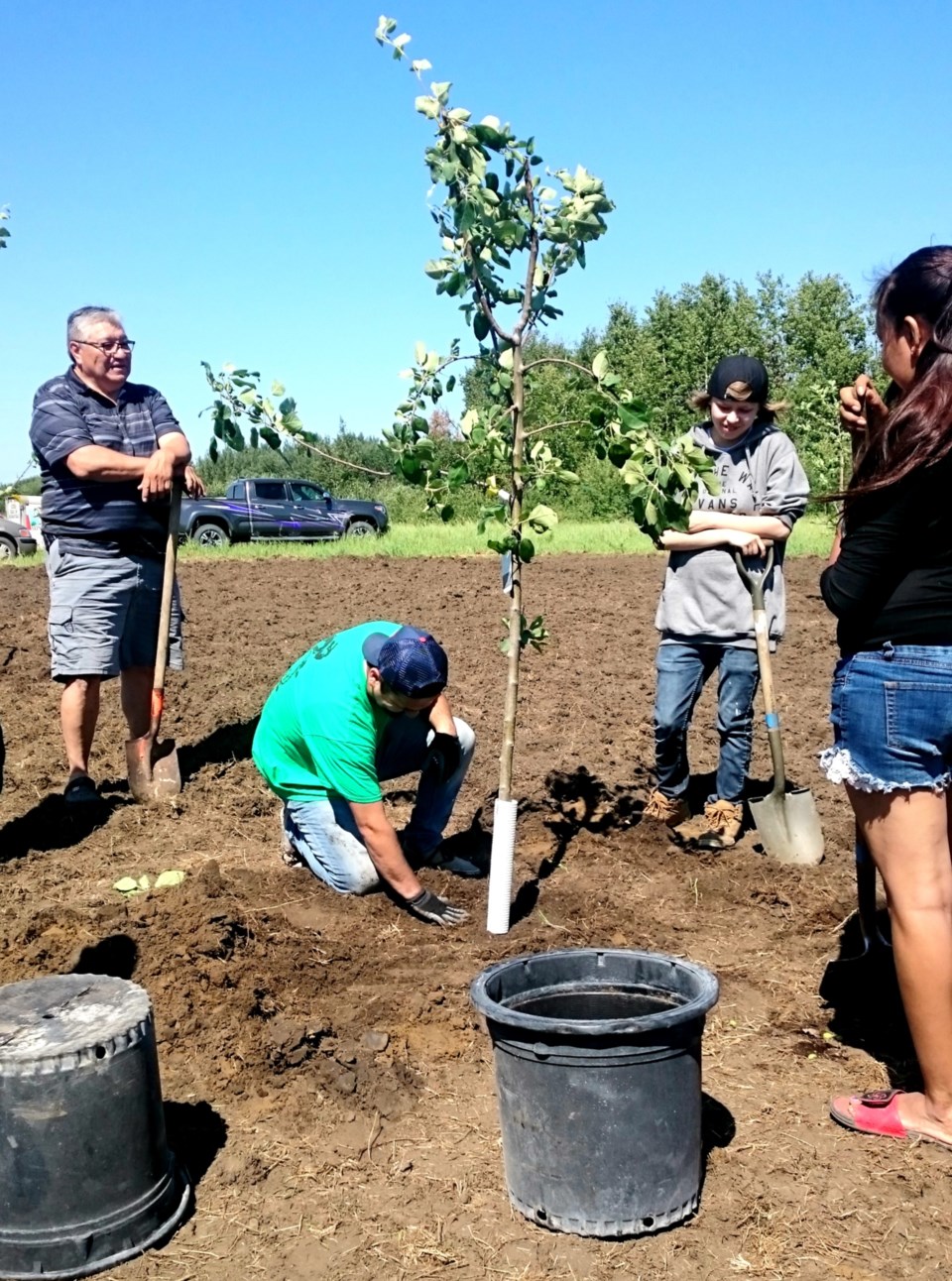In appreciation of making it through another long winter, this column is dedicated to ensuring we all plant at least one tree this spring.
The spring is the absolute best time to plant anything on the prairies. If you are planting something that is going to live a long time – like a tree, then planting it correctly is the most important step in ensuring a long and fruitful life. Taking a little extra time and care when planting will save you a lot of trouble even years down the road.
Before you worry about how to plant, you need to consider where to plant. Try to emulate the conditions where the tree would naturally grow. It is essential to know the mature size of whatever you are planting. When it is mature, is it far enough away from the house, the driveway and power lines? Will it fit into the location of choice once fully mature?
Container-grown stock can essentially be planted any time in the year, even though spring is the ultimate best time. Try to transplant balled and burlapped stock when the tree or shrub is not in active growth and the transpiration needs are lowest. Plant in early spring if possible.
When planting a tree grown in a container, the most important thing to remember is to ensure that the roots will spread out beyond the size of the container. If the tree has been in the pot for too long it could be “pot-bound,” which in the future will ensure your tree will never grow to its potential. In extreme cases, tightly wound roots will continue to grow that way even after planting, until the roots girdle and choke themselves, killing the tree. In less extreme cases, the roots will not be able to expand much beyond the size of the container and the tree will be less healthy and hardy due to its underdeveloped root system.
After removing the container, check the roots to see how tightly packed they are. If it is possible to gently tease them apart as much as possible with your hands that is great, but if they are wound around and around then simply take the sharp end of a spade and literally cut the roots on each side of the root ball. This will ensure that the new roots will not follow the same winding pattern. The hole the tree is then planted in should be at least twice as wide and deep as the container. A good rule of thumb is if you have purchased a $50 tree, is to dig a $100 hole. Place the tree/shrub into the hole and fill in the area around the tree with soil that is well amended.
You may purchase trees or shrubs that are not in pots but in a burlap or burlap-like sacking. When planting this type of stock, remove any twine around the roots and if the fabric is synthetic it too should be removed. If it is natural fibre then simply expose the top half of the ball prior to planting. The hole the tree is planted in should ideally be twice as large as the root ball, both in width and depth. Put some amended soil at the bottom of the hole and gently place the root ball in, being sure to lift the tree by the root ball and not the trunk. Fill the hole with well amended soil and pack tightly.
It is a general rule of thumb to plant all trees and shrubs at the depth at which they were growing in the pot. However, ensure that you are not planting it too deep which is also extremely harmful. Look for the top root and plant that at the top of the soil in the tree’s forever home. Any newly planted tree should be watered thoroughly immediately after planting with a dilute high phosphorus fertilizer solution. Ensure that you water on a regular basis for its first season as it establishes itself.
Planting a tree or shrub properly, whether it be a fruit tree, ornamental or even just a shade tree, will ensure you get the most out of your investment.
Hanbidge is the Lead Horticulturist with Orchid Horticulture. Find us at www.orchidhort.com; by email at [email protected]; on facebook @orchidhort and on instagram at #orchidhort.
Tune into GROW Live on our Facebook page https://www.facebook.com/orchidhort or check out the Youtube channel GROW https://www.youtube.com/channel/UCzkiUpkvyv2e2HCQlFl0JyQ?




